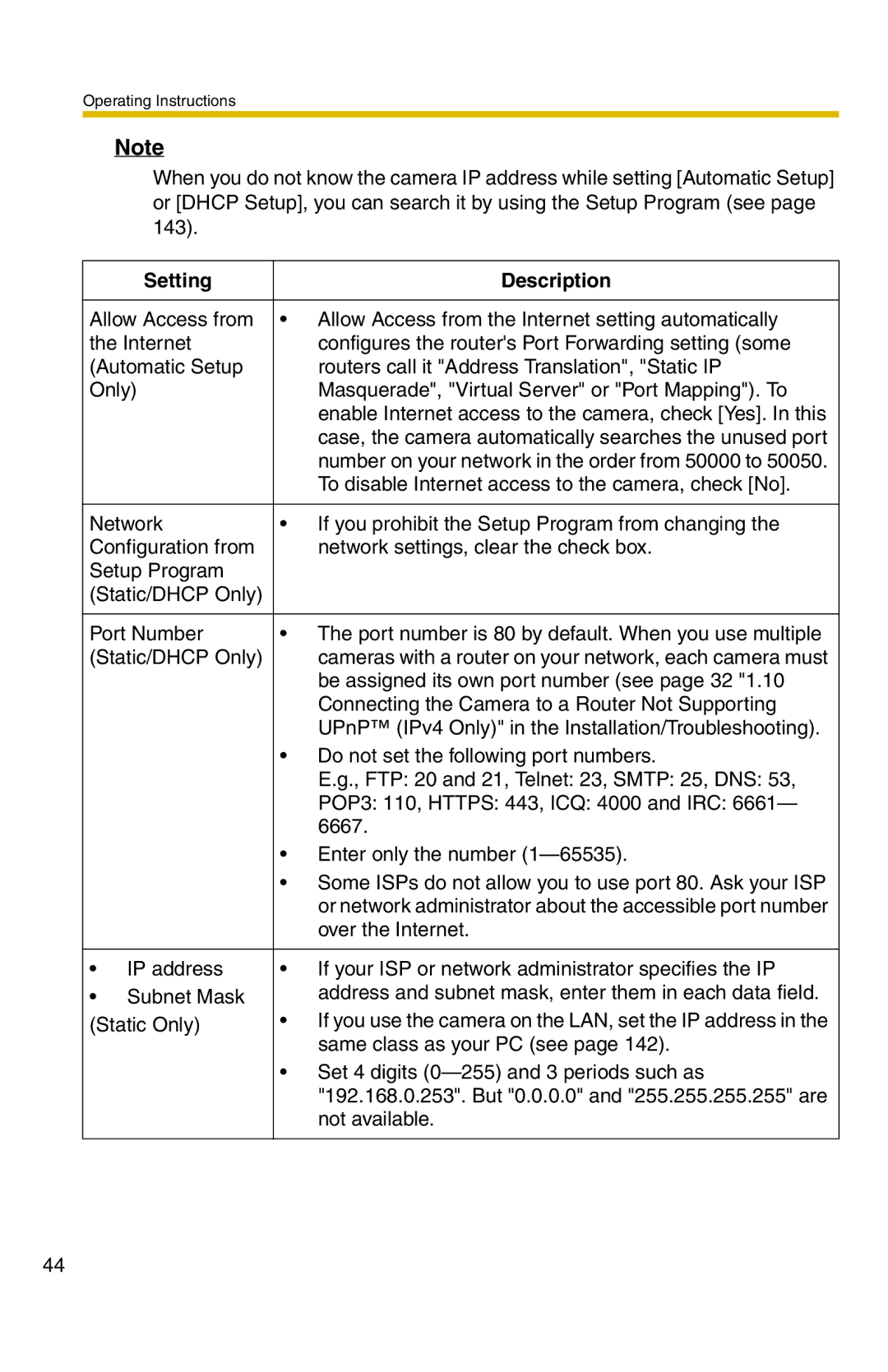Operating Instructions
Note
When you do not know the camera IP address while setting [Automatic Setup] or [DHCP Setup], you can search it by using the Setup Program (see page 143).
| Setting | Description |
|
| |
Allow Access from | • Allow Access from the Internet setting automatically | |
the Internet | configures the router's Port Forwarding setting (some | |
(Automatic Setup | routers call it "Address Translation", "Static IP | |
Only) | Masquerade", "Virtual Server" or "Port Mapping"). To | |
|
| enable Internet access to the camera, check [Yes]. In this |
|
| case, the camera automatically searches the unused port |
|
| number on your network in the order from 50000 to 50050. |
|
| To disable Internet access to the camera, check [No]. |
|
| |
Network | • If you prohibit the Setup Program from changing the | |
Configuration from | network settings, clear the check box. | |
Setup Program |
| |
(Static/DHCP Only) |
| |
|
| |
Port Number | • The port number is 80 by default. When you use multiple | |
(Static/DHCP Only) | cameras with a router on your network, each camera must | |
|
| be assigned its own port number (see page 32 "1.10 |
|
| Connecting the Camera to a Router Not Supporting |
|
| UPnP™ (IPv4 Only)" in the Installation/Troubleshooting). |
|
| • Do not set the following port numbers. |
|
| E.g., FTP: 20 and 21, Telnet: 23, SMTP: 25, DNS: 53, |
|
| POP3: 110, HTTPS: 443, ICQ: 4000 and IRC: 6661— |
|
| 6667. |
|
| • Enter only the number |
|
| • Some ISPs do not allow you to use port 80. Ask your ISP |
|
| or network administrator about the accessible port number |
|
| over the Internet. |
|
|
|
• | IP address | • If your ISP or network administrator specifies the IP |
• | Subnet Mask | address and subnet mask, enter them in each data field. |
(Static Only) | • If you use the camera on the LAN, set the IP address in the | |
|
| same class as your PC (see page 142). |
|
| • Set 4 digits |
|
| "192.168.0.253". But "0.0.0.0" and "255.255.255.255" are |
|
| not available. |
|
|
|
44
